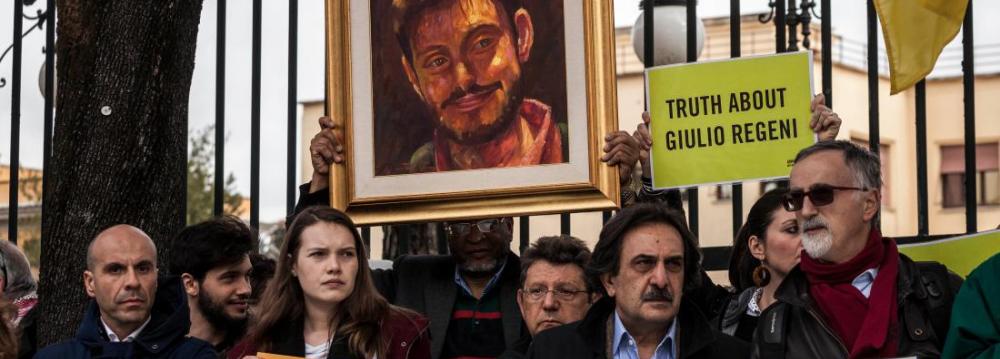We’ve all grown so used to the “Muslim terror” narratives of our favorite dictators–I’m talking about Nasser, Sadat, Mubarak and now, of course, Field Marshal-President el-Sisi of Egypt–that we’re in danger of believing them.
The Muslim Brotherhood and its campaign of “terror” (in fact, Egypt’s violence has nothing to do with the Brotherhood) has allowed Sisi’s thugs to beat up, lock up, torture, murder and otherwise execute thousands of his people who object to his outrageous police state behavior, Robert Fisk wrote in The Independent.
But the real danger to his regime–indeed, to the Egyptian governments under British rule, to Sadat and finally to Mubarak–always came from the secular, socialist opposition, symbolized by the country’s immensely brave, tough and independent trade union movements.
A few weeks ago, a young PhD student wrote presciently that “the [Egyptian] unions’ defiance of the state of emergency and the regime’s appeal for stability and social order–justified by the ‘war on terror’–signifies … a bold questioning of the underlying rhetoric the regime uses to justify its own existence and its repression of civil society”.
The Cambridge University student who wrote these words was Giulio Regeni whose brutally tortured body–so mutilated that his mother could only recognize him by his nose–was found dumped close to the Cairo-Alexandria motorway in February.
Over the previous nine days, he had been beaten, tortured with electricity, stabbed and suffered a severe brain hemorrhage.
Sisi’s cops variously announced that Regeni had been the victim of a traffic accident, kidnapped and murdered by “a criminal gang”, even killed in a lover’s argument. Italy, exploding in anger at Regeni’s death–the British Foreign Office only clip-clopped into complaining about the Cambridge student’s murder after it received 10,000 signatures of protest from within the UK–believed that the “criminal gang” was Sisi’s own state security police.
The creepy excuses of the Egyptian government need not detain us here. Sisi blames a “conspiracy” (of course) by “people of evil” (naturally) and the shortcomings of journalists who believe in social media–as opposed to the officially sanctioned Egyptian newspapers and television, which largely continues to fawn over the field marshal and the coup d’etat he staged against the elected Muslim Brotherhood government it once supported.
Far more attention, however, needs to be paid to the institutions that Regeni was studying in Cairo: the independent trade unions that represent, in the long term, a far more dangerous enemy of the Sisi government–a PhD investigation that may have led directly to his murder.
One of Nasser’s first acts–before creating the inevitable “official” union, which still exists–was to execute two leading strikers, Mustafa Khamees and Abdel Rahman al-Baqary, from the Kafr al-Dawar spinning factories. Under Mubarak, police killed striking steel workers in 1989.
But the real source of fear for Mubarak’s regime, and one of the principal reasons he was eventually overthrown, came from the cotton workers and spinners of Mahala, a grubby town north of Cairo in the Nile Delta.
The independent trade unions there staged an attempted coup against Mubarak in 2006–seven years before the Cairo Tahrir Square revolution.
Trade unionists were released from detention, they got pay rises–but did not destroy Mubarak. They tried again in 2008 and were savagely suppressed.
The Lessons Learned
But the lessons were learned. When Egyptians gathered in Cairo’s Tahrir Square by the million in 2011, the first industrial workers to join them were the cotton factory employees of Mahala–which is one reason why the Mubarak regime immediately halted all railroad traffic between the capital and the Nile Delta.
But the official trade union has tried to destroy the independent unions; striking under the military regime was now “treason”, according to its leadership–you can see how this fits into the Sisi story of plots and treachery against the state. They could close Egypt down, destroy its economy, even overthrow its military leadership–unless they were suppressed.
Enter Regeni, whose last anonymous report for the Italian newspaper Il Manifesto has been reprinted by the British socialist magazine Red Pepper. He wrote about the Center for Trade Union and Workers’ Services–“a beacon of independent Egyptian trade unionists,” he called it–and of how Sisi’s attack on trade union freedoms had caused “widespread discontent among workers”.
Regeni remarked on the large participation of women. He wrote about recent, unreported industrial strikes. He said that “in an authoritarian and repressive context under General [sic] Sisi”, these events would “break the wall of fear...” Regeni must have had many contacts–with trade union “traitors”, of course, who wished to “destroy” Egypt.
You can see how the cops work in Cairo. Who were Regeni’s contacts, they must have asked? And in a country where foreign-funded organizations, even students, are now regarded as spies, who was Regeni “really” working for?
Italian and other European newspapers have named the Egyptian police general, Khaled Shalabi–who was given a suspended sentence in Alexandria in 2003 for torturing and killing a detainee–as the man in charge of the CID in Gaza governorate where Regeni’s body was found.
It was Shalabi who stated the student had been killed in a road accident–surely the first traffic violation whose victim appeared to have been tortured with electricity.
But this is not the point. Regeni, like every good student and journalist, had spotted the greatest threat to a dictatorship–and almost certainly paid the price.


